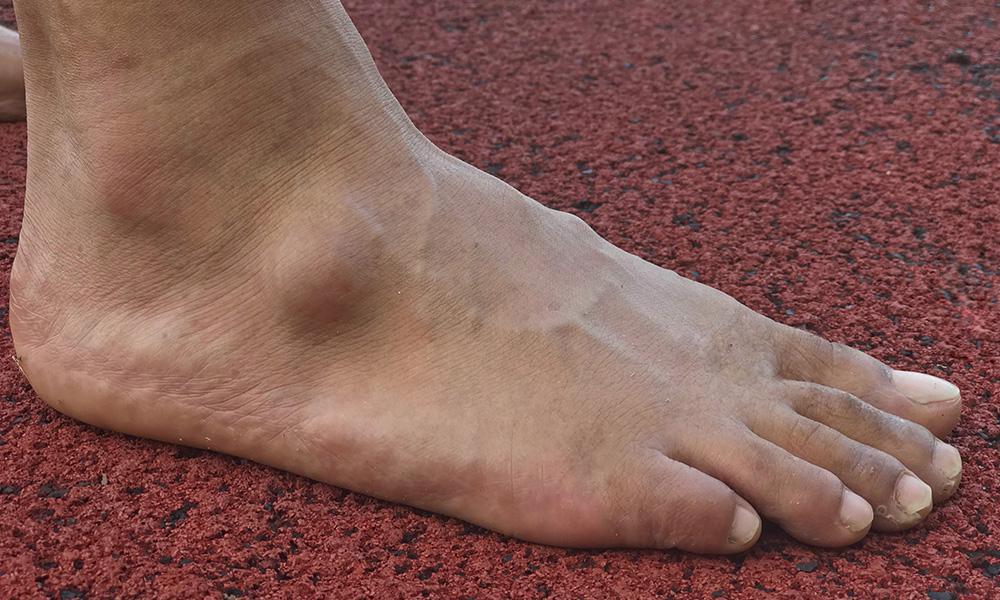Ganglion Cysts
Ganglion cysts are a common type of lump that can develop on different parts of the body, including the feet, hands, and wrists. While they come in various sizes, most ganglion cysts are loaded with a gel-like, thick fluid filled lump.
If you experience this condition in any part of your body, you should seek medical attention immediately.
If you reside in Tennessee, take a trip to Cutting Edge Foot and Ankle Clinic. We are a leading specialty clinic providing solutions to foot and ankle problems, such as fungal nail infections, ankle pain, plantar warts, ingrown toenails, tendon pain, fractures, and many more.
We have offices located in Pleasant View, Nashville, Brentwood, and White House. Call us at 615-866-9639 if you have a painful cyst on your foot, and we will take care of it for you!
What Are Ganglion Cysts
Ganglion cysts are sacs filled with fluid that develops over a tendon or joint. Located in the cysts is a thick, clear, sticky, material that is noncancerous lumps.
These cysts develop when the synovial fluid, which oils the joints, leaks out and collects into mass. However, there are other reasons why these cysts might appear and develop in different parts of your body.
Also known as bible cysts, they usually develop as small stick lumps but have the potential to grow into different sizes.
Types of ganglion cysts
Ganglion cysts are typically grouped into 2 major categories. They include:
- Dorsal Ganglion cysts. These are the most common cysts found on the back of the wrist. These mucous cysts may be either soft or hard, small or large, movable or fixed to a spot on the skin.
- Valar Ganglion cysts. These cysts are typically found on the palm side of the hand or wrist. These kinds of ganglion cyst are less common compared to Dorsal Ganglion cysts. They can also appear near the base of the fingers or along the tendons.
Similarly, ganglion cyst forms on other parts of the body, including the feet, ankles, knees, and shoulders.
Ganglion Cyst Symptoms
Some of the common ganglion cysts symptoms include the following:
- Visible lumps appear on the wrist, hand, ankles, knees, and foot.
- Swelling that appears suddenly or over time.
- A sense of weakness if the entire cyst presses on or is connected to the tendons.
- Pain and discomfort.
- Tingling sensation in affected areas.
- Limited range of motion
Ganglion Cyst Complications
Many ganglion cysts result in the following complications when it is left untreated:
- Nerve compression
- Joint stiffness
- Infection, if the skin is broken or bacteria enter during a surgical procedure.
- Scar formation from treatment.
What Causes a Ganglion Cyst
The exact cause of ganglion cysts is unclear. However, there are several theories regarding their formation on the skin. They include:
- Joint or tendon irritation.
- Injured joint or tendon.
- Degeneration of the joint or tendon.
- Joint or tendon herniation.
- Trauma
How Do Ganglion Cysts Develop
As earlier highlighted, it is yet unclear what causes the development of ganglion cysts. However, studies have shown that it usually occurs amongst younger people between the ages of 15 and 40.
Research also suggests that women are more likely to be affected by this condition than men.
It is vital to note that most ganglion cysts do not cause serious complications. However, it is essential to seek medical attention if you notice this condition on your skin’s surface.
How Are Ganglion Cysts Diagnosed
The following are common methods used in diagnosing ganglion cysts:
- Physical exam. Healthcare professionals will carry out a physical examination of the affected area to review the size, shape, location, and consistency of the bump. They will also examine other symptoms such as tenderness, pain, or limited range of motion.
- Imaging tests. Examinations such as magnetic resonance imaging (MRI), X-rays, and ultrasound are used to visualize the cyst and rule out other conditions like tumors and bone defects.
- Aspiration. This is the process of using a needle and syringe to withdraw the ganglion cyst returns fluid for confirmation.
- Clinical judgment. A doctor may be able to diagnose fluid filled cysts without the need for imaging tests or aspiration.
How are Ganglion Cysts Treated
You do not need a medical emergency if you see a ganglion cyst on your body. All you need to do is conduct the following:
Self-Care at Home
However, you can try the following after medical guidance:
- Over-the-counter pain medications, such as Ibuprofen or acetaminophen.
- Apply warm compresses on the cyst to alleviate the pain
- Avoid repetitive movements that may aggravate the cyst.
Aspiration
This is a process that involves using a needle and syringe to drain the fluid in the cyst. It is recommended to leave this action to a healthcare professional.
Aspiration and Steroid Injections
Aspiration and steroid injections are common practices to remove ganglion cysts. While aspirations involve using a needle and syringe to drain the fluid from the cyst, steroid injections involve injecting corticosteroids to reduce inflammation and shrink the cyst.
Surgery
A surgical process involves a doctor removing the cyst and the surrounding areas attached to it. This is recommended as a last resort – when self-care treatment and aspiration do not work.
This process is less painful and you will feel better afterward.
If you experience ganglion cysts on any part of your body, the best course of action is to contact a healthcare professional.
They will run tests to diagnose the problem and suggest treatment options for you. After which, the cyst will be removed completely in a process that is generally soothing and pain-free.
Contact Cutting Edge Foot and Ankle Clinic today to learn all about our services.


